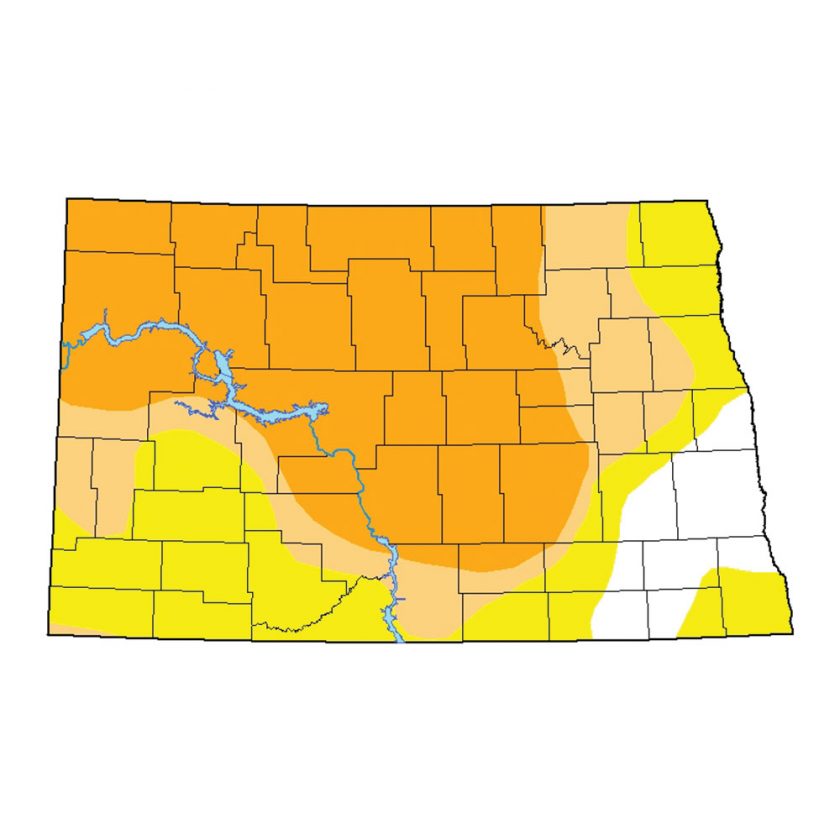November driest in 88 years in Minot region amidst drought conditions

Submitted Photo Severe drought conditions are widespread in North Dakota as indicted by the orange area of this map produced by the U.S. Drought Monitor. November marked yet another below average precipitation month for the region.
November was dry, exceptionally dry. The precipitation total for the month of November was a mere 0.06 of an inch according to daily observations at the North Central Research Extension Center south of Minot. That makes this year’s 30 days of November the driest since 1932 when 0.05 of an inch was measured.
The U.S. Drought Monitor last week placed 46.76% of the state in the category of “severe drought.” Nearly all of the remaining area of the state was considered to be in “moderate drought” or “abnormally dry.” It’s not all November’s fault. The dry conditions have been a year in the making.
Every month thus far in 2020 produced less than average precipitation as measured at the Research Extension Center with the exception of July when the tally was 0.41 inches more than the long-term average. Notable dry months included May which was 1.13 inches less than usual, September which was 1.14 inches below normal, and October which was 0.88 inch below normal.
For the year, through November, precipitation at the Research Extension Center is down 5.60 inches as compared to 116 years of data. Minot’s yearly precipitation average, both rain and snowfall, is 17.19 inches. It’s highly unlikely much of a change in drought conditions will occur in December. The average precipitation in the 12th month in Minot is only 0.38 inch, 7.6 inches of which arrives as snowfall and is melted to determine the water equivalent.
While November’s meager 0.06 inch of precipitation is notable, it would not be particularly alarming if not a continuation of the lack of precipitation in 2020. November’s average precipitation is only 0.75 inch but, nevertheless, this November’s 0.06 inch makes for yet another dry month this year.
Dry conditions are always a concern for North Dakota’s farmers and ranchers, but even more so if present during the spring planting season. Snowmelt and spring rains are particularly crucial for the development of young crops and hayland. Even though 2020 is on track to finish out the year perhaps six inches below normal precipitation, an inch or more of timely spring rain will go a long ways toward alleviating very dry conditions.




